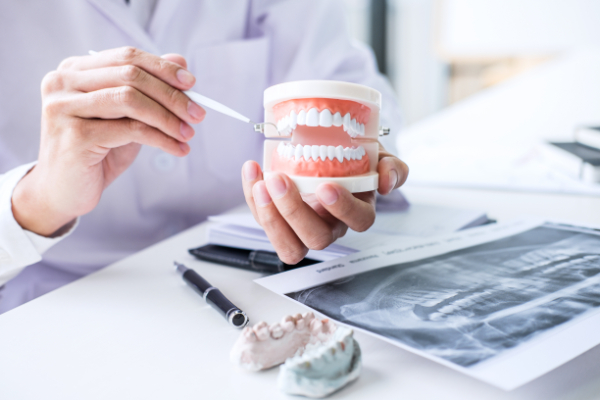What Happens in a Gum Graft Procedure from a Periodontist

You may have many questions on your mind if your periodontist tells you that you require a gum graft. Read on to learn more about this procedure. Learning about gum grafting, the process, and the recuperation period is a great step toward easing these concerns.
An overview of gum graft procedures
Gum grafting is a periodontist-performed dental treatment. It is the standard treatment for gum recession to avoid exposing the root surface of the teeth, which can lead to decay and discomfort. Gum grafts can reverse these negative consequences of the condition and restore gum health to preserve the protective barrier surrounding the teeth.
A gum graft entails taking a portion of tissue from the roof of the mouth or nearby healthy gum tissue. This portion is then grafted to the receding gum tissue. In essence, it is a two-part treatment that involves using healthy tissue to fix problems and safeguard the smile from potential complications.
Gum grafting can be done in various ways, each addressing a different periodontal issue. The degree of gum recession, the amount to which the cheek can pull on the surgical site during everyday activities, and whether the gums have receded in between the teeth or only on the front surface all influence which type of gum transplant is advised.
Gum graft procedures all entail taking donor tissue from another region of the mouth and connecting it to the receding gums. The periodontist will go through each of these gum grafting procedures with the patient and recommend the ideal option based on their unique situation and oral health history.
The gum grafting process
One of the interesting things about a gum transplant is how little preparation is required. It simply entails meeting with a periodontist to determine the severity of the recession problem and the most suitable gum grafting procedure.
There are no food restrictions or drugs to take before the operation; patients will only need to arrange for a ride to and from the dental office, as the combination of anesthetic, post-op medication, and minor pain can make being alone or driving unsafe.
A local anesthetic will be given to numb the region. In certain situations, general anesthesia may be used instead, especially if the patient is nervous and can relax more easily if asleep.
Since the periodontist has previously selected the donor tissue for harvesting and plotted out the grafting location, the gum grafting process itself is quick. Patients will be instructed to rinse their mouths with an antimicrobial mouthwash after the sutures are in place and the graft has been secured. The periodontist may also urge them to wait for an hour or two after the graft to check that everything went well.
The bottom line
During the initial consultation, the periodontist will guide the patient through the gum graft process. Make an appointment right away if you have observed the warning symptoms of gum recession. If left untreated, gum recession will worsen over time.
Request an appointment here: https://www.summitperioimplants.com or call Summit Periodontics & Dental Implants at (908) 219-6664 for an appointment in our Summit office.
Check out what others are saying about our services on Yelp: Read our Yelp reviews.
Related Posts
Lip fillers, or dermal fillers, offer more than volume—they can complement dental work and frame the smile with balance and harmony. For patients seeking a polished aesthetic result, this treatment serves as a supportive tool that enhances the overall appearance of the mouth. Periodontists who focus on oral soft tissue health understand how facial features…
Curious about bone grafting? Read on to learn more about this procedure. Periodontal health is a crucial aspect of one's oral health, but gum disease and tooth loss can compromise it and cause jawbone loss. Bone grafts are increasingly used in periodontal treatment as they can rebuild and strengthen the jawbone. The procedure can improve…
Periodontists can diagnose and treat conditions affecting the gums and cheeks. The soft tissues of the mouth are vulnerable to bacterial infection. Understanding how these dental professionals help patients can ease your mind for your next procedure. If you want to know how periodontists can help your gums and cheeks, here are the details.Periodontists concentrate…
Learning more about what Botox® is and how it works to treat problems in dental patients is the first step one needs to take when interested in using this FDA-approved treatment. It is important to understand that dental professionals must first undergo detailed training in order to offer their patients this medical option.Some people may…
